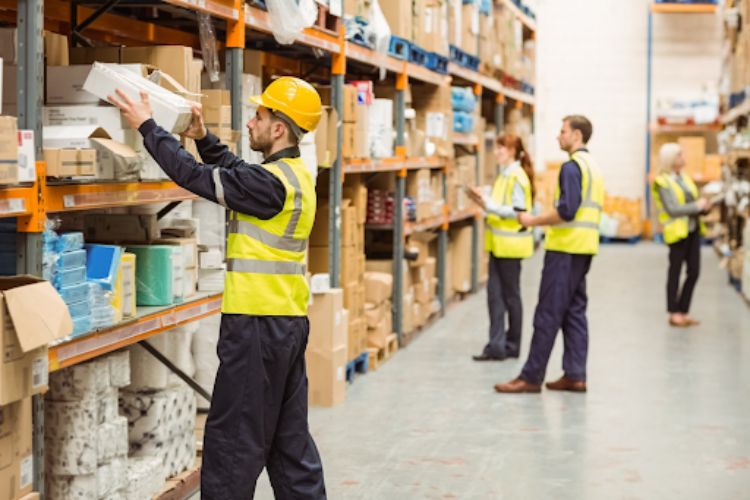 When it comes to maintaining a warehouse, safety is paramount. It’s not about ticking boxes or meeting regulatory standards. It’s about ensuring every employee steps into a secure and hazard-free environment each day.
When it comes to maintaining a warehouse, safety is paramount. It’s not about ticking boxes or meeting regulatory standards. It’s about ensuring every employee steps into a secure and hazard-free environment each day.
A comprehensive warehouse safety checklist is a critical tool for this purpose. It outlines crucial safety measures in warehouses that shouldn’t be overlooked. This article will guide you through six must-have items on your warehouse safety checklist. It lays down practical and effective warehouse safety guidelines.
Here’s a guide that will help you create a workplace that prioritizes the well-being of its people.
Table of Contents
1. Proper Training and Education
All employees must undergo appropriate training and education in workplace safety protocols. This includes proper handling of equipment, hazardous materials, and emergency procedures.
Make sure to provide regular refresher courses. It helps keep these guidelines fresh in employees’ minds to prevent accidents.
2. Regular Inspections and Maintenance
Warehouses have hazardous equipment, such as forklifts and conveyor belts. Regular inspections and maintenance of these machines are essential. It ensures they are in good working condition and do not pose a risk to the employees operating them.
Keep detailed records of these activities to track any potential issues. You should also have small business security systems in place. This helps you to watch the premises and identify any potential hazards. Maintaining warehouse security can also ensure the safety of your employees.
3. Clear Signage and Markings
Clear and visible signage and markings are crucial for maintaining warehouse safety. This includes marking hazardous areas with warning signs to alert employees to dangers. It includes loading docks or machinery signs. Floor markings can also help guide traffic flow. It also helps to maintain organization in the warehouse.
4. Personal Protective Equipment (PPE)
Personal protective equipment should always be available for employees to use when necessary. This includes essential items such as hard hats to protect against head injuries.
You should also have safety glasses to shield the eyes from hazards. Make sure to have gloves to safeguard your hands. It’s also recommended to have high-visibility clothing to enhance visibility in low-light environments.
It is crucial to focus on the proper maintenance of PPE. Make sure to inspect and replace worn-out or damaged equipment. This ensures continued effectiveness in safeguarding employee well-being.
5. Emergency Plans and Procedures
In case of an accident or emergency, having defined plans and procedures in place can save lives. These should include evacuation routes and emergency contact information.
You should also have procedures for handling injuries or hazardous material spills. Make sure to conduct regular drills to ensure familiarity with these protocols.
6. Ongoing Safety Training and Communication
Ensuring warehouse safety is an ongoing process. It requires constant effort from everyone involved. Regular safety training sessions and open communication are important.
It ensures that the management and employees can help identify potential hazards. Encourage employees to report any safety concerns they may have and take prompt action to resolve them.
Perfecting Your Warehouse Safety Checklist
Crafting an effective warehouse safety checklist is a non-negotiable commitment. It fosters a secure warehouse environment. It serves as a roadmap, directing your efforts toward key safety areas and ensuring pivotal safety guidelines aren’t overlooked.
Remember, the goal isn’t just creating the checklist. It’s about creating a culture of safety where each team member feels valued and protected. Use this guide to enhance security and safety within your warehouse. Let’s make the world a safer place, one warehouse at a time.
Head over to our blog for more helpful tips like this.






